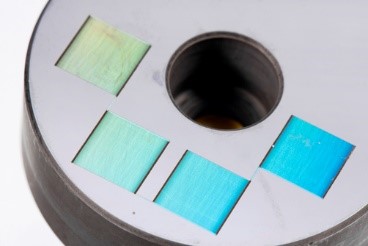Laser Pre-Treatment and the Future of Hybrid Materials Interview by Liliana Caldero Originally in LIA TODAY July/August 2019. Throughout the world, scientists are rising to the challenge of developing new techniques to improve the eco-friendliness of products and production lines. Germany has been among the strongest supporters of the movement to be more environmentally responsible. […]
Featured
Surface Functionalization with LIPSS Continues to Expand into New Industries
Interview by Liliana Caldero As featured in LIA TODAY July/August 2019. Laser researchers from Bundesanstalt für Materialforschung und -prüfung (BAM) have teamed up with medical researchers from Johannes Kepler Universität Linz (JKU) and Kepler Universitätsklinikum Linz (KUK) in a European research project to show the potential of laser materials processing for suppressing the adhesion […]
Killing Cancer at the Speed of Light
As featured in LIA TODAY By Liliana Caldero LITT Brain cancers make up about 1.4% of all new cancer cases in the U.S. (NCI, 2018). Surgery is an important part of managing these cancers, with the goal of removing the tumor when possible. Doing this safely can present a challenge when the tumor is […]
Laser Additive Manufacturing’s Journey to Commercialization
By Andrew Albritton As seen in LIA TODAY LASER ADDITIVE MANUFACTURING CHALLENGES Laser Additive Manufacturing (LAM), as it pertains to powder based manufacturing, is a technique that utilizes the interaction of lasers and base materials to construct a product, rather than removing material from a pre-constructed block of material. LAM is quickly approaching the critical […]
Superhydrophobic and Superhydrophilic Functionalization of Engineering Surfaces by Laser Texturing
By Suwas Nikumb, Peter Serles, and Evgueni Bordatchev As seen in ICALEO 2017 and LIA TODAY Nature is a bountiful source of inspiration to advance innovative surface functionalities, processes, and technologies for engineering materials. For example, the super-hydrophobic surface characteristic of the lotus leaf can be recreated by mimicking the microstructure and surface energy […]










